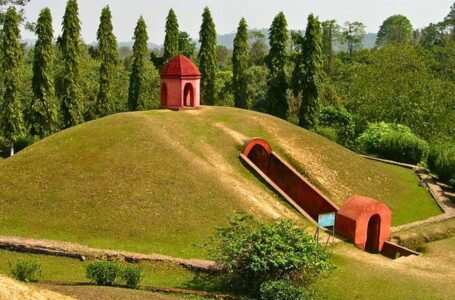The Navajo Long Walk: A Journey of Resistance and Survival
- American history
 Meenakshi M P
Meenakshi M P- January 10, 2024
- 0
- 244
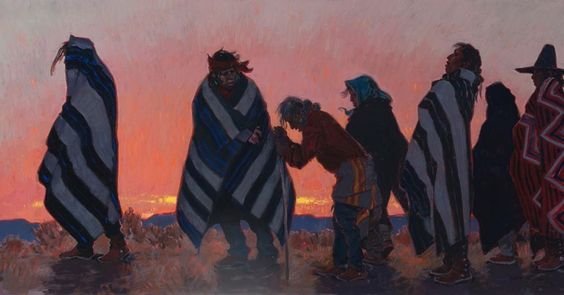
The Long Walk of the Navajo also called the Long Walk to Bosque Redondo was an ethnic cleansing or forced displacement of the Navajo people from their native home, the western New Mexico Territory (modern-day Arizona) to a desolate internment camp (imprisonment camp) in Bosque Redondo. Led by Christopher (Kit) Carson, in January 1864, some 8500 men, women, and children were marched almost 250 miles to 300 miles(480 km) along a desolate tract on the Pecos River in eastern New Mexico. Lamentably, around 200 Navajos died of starvation and exposure to the elements.

Origin
The Navajo people are a Native American tribe in the Southwestern United States. They are the second-largest recognized tribe in the U.S. after the Cherokee tribe. They oversee the Navajo Nation, a Native American reservation occupying portions of Arizona, New Mexico and Utah. The early Navajos were hunters and gatherers until they learned farming and animal keeping from the Spanish and Pueblos respectively. They followed a matrilineal system with women owning the livestock and the agricultural land.

The Navajo tribe began adopting many European settlers’ traditions and technologies, which in turn became a significant source of trade with them and also among other tribes. They had a relatively peaceful co-existence with other tribes such as Apache, Hopi etc. With the Spanish and Pueblican settlers, they had a tense yet peaceful co-existence. In the mid 1800s, the US was driven to expand its territory westwards leading to the occupation of the motherland of Navajo people. Raiding, which was a way of life for the native Americans, posed a hindrance for the US government in their attempt to make peace with the tribes. Soon peace treaties were signed with the majority of the tribe leaders but the raiding continued much the same way as before the treaty. Military expeditions were carried into the Navajo nation to control the raiding with the help of their enemies such as Utes, Zunis and other Pueblos but they were not successful.
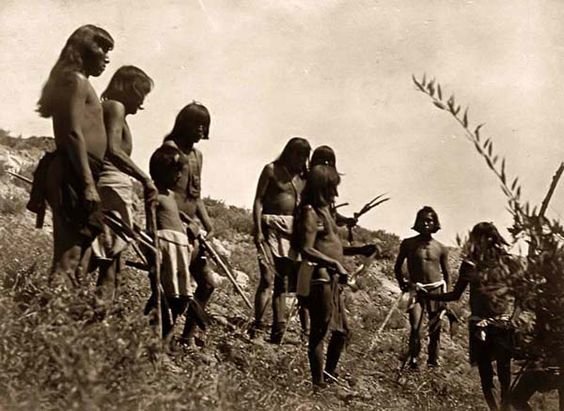
As this cycle continued further, the government decided that the raids could not be settled with treaties and that a direct, forcible control of the Navajos would have to be undertaken. Soon a military post was established in the heart of Navajo country and the people considered this as an invasion of their homeland. However, they agreed to peaceful co-existence due to the efforts of some Indian agents. Short-lived as it was, hostile feelings between the two groups elevated with the commander’s ruthless actions of assigning the grazing land solely for the White American’s horses, thus pushing the Navajo sheep and horses to starvation. Successive expeditions were carried out with no fruitful outcome except for the killing of some peaceful Indians. In April 1860, an attack was carried out by the Navajo leaders but they posed little challenge to the heavy artillery of the soldiers resulting in many deaths and injuries. This was an attempt to drive the White Americans out of the way and as this failed, the raidings continued with newfound vigour.
Journey
Despite the conditions of the treaty being broken off on both sides, the military leaders began drafting plans to subdue the Navajo people using forceful measures as there was continued resistance against their expansion of territories. James H Carleton, the New Mexico Military Department Commander ordered Colonel Kit Carson to proceed to Navajo territory and ensure the Navajon surrender. He followed a scorched-earth campaign which entailed burning villages, slaughtering livestock and destroying water resources thus forcing the Navajo people into starvation and desperation.
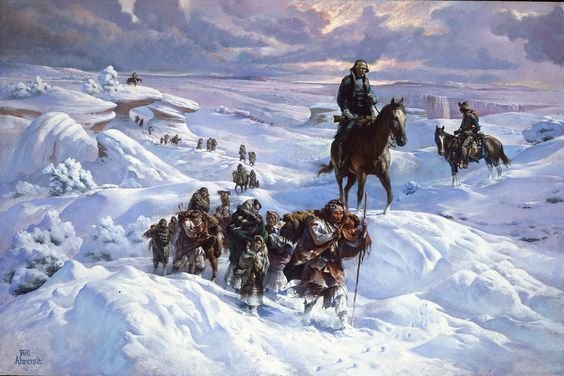
In the spring of 1864, the Navajos surrendered and soon generations of Navajo people were forced to walk in harsh winter conditions to Bosque Redondo, a piece of land in New Mexico territory which was not at all suitable for agricultural practices that had been followed by the Navajos. Though it was intended to be a reservation, it functioned as an internment camp. Accounts passed through several generations of Navajo people reported that the soldiers would shoot down anyone who slowed down or tried to deliberately lengthen the walking process by resting down. Many Navajos were killed due to the impertinence of the soldiers among which were pregnant women.
The US government wanted the Navajo people to adopt the white cultural traditions, begin a new way of life as farmers and also educate them. Unfortunately, it seemed as if nature had other plans as the corn crop was infested with army worms and the Pecos River flooded and washed out the lands and the irrigation system. Health deteriorated dramatically and there were not enough tents, blankets or medicines. Although the government issued rations and supplies and spent around $ 1.5 million to feed the Indians, it did little to protect them from starvation and the weather.

Weariness grew upon both parties and the US government noticed its depletion of sources as it tried to keep the Navajo people under their control. The people were also growing rebellious and wanting to just go back to their homeland. Finally, they considered the feelings of the Navajo people and only if they agreed to keep the peace with neighbouring tribes and also not oppose the railroad construction. Four years later, the Navajo signed the historic US-Navajo Treaty of 1868. Though the treaty allowed them only a small portion of their once-original homeland in Arizona and New Mexico, having endured the miserable conditions at Bosque Redondo, they were essentially happy to go back home as they were one of the few tribes that were allowed to return to their native lands. The US government agreed to provide stock as well as also protect the rights of the Navajo people. In turn, they were expected to restrict their raiding and also ensure compulsory education of their children.
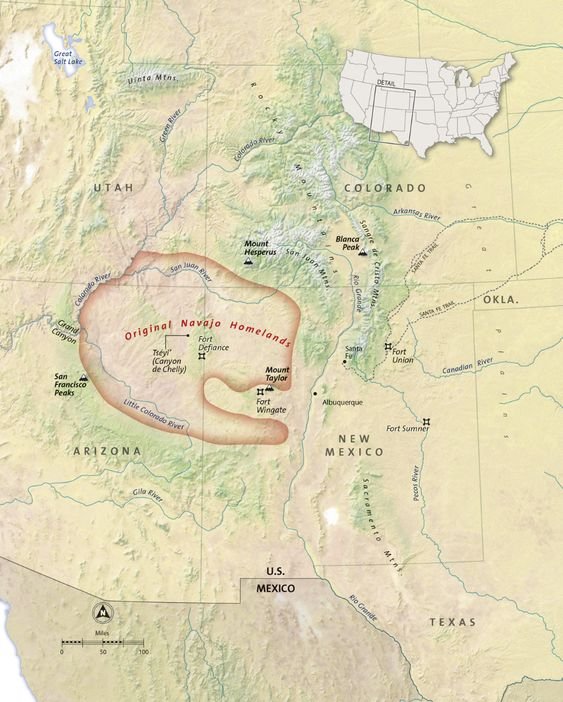
Thus on June 18, 1868, the Navajo people set off on their return journey, the “Long Walk” home. Despite the initial land accorded to them by the US government, they were able to expand them slowly and thus ensued the present known Navajo Nation.
Conclusion
The White Americans are known for their ruthlessness when it comes to their animalistic greed for wanting to expand their territories and having no regard for the cultural and traditional practices and norms of the Native Americans. Encroaching upon the original homelands of the tribes and displacing them for personal materialistic desires, they would go to any lengths including destroying all possible methods of survival (livestock, water etc.), shooting down and slavery. One such tribe to face the wrath of the White Americans was the Navajo people.
Despite repeated invasions of their homeland, they developed solidarity among themselves which went a long way to keep hope alive in them till they reached their homeland back again. Resisting to give up their homeland for destruction and construction purely shows the connection between the motherland and the Navajo people. As a tribe that gave importance to the women of their clan, they have come a long journey of survival too. This vivid journey also reflects the enduring struggle for justice and equality. Though they may have returned to their homeland, the cruelties they faced would certainly create a dent in their personality and mental health too. To start again from nothing is hard but not doing anything is even harder. To the nation they are now, it was certainly a journey towards a more just and unified nature while also resisting the unjust US government policies and doctrines. This resistance is highlighted through activism, cultural movements, legal battles or a fight for recognition or dignity.

Ultimately, the narratives of resistance against White Americans outscore everything. The injustices and the cruelties committed and is as vividly described could stand as foolproof evidence against the US government and truly mirror the atrocities committed by them. They could inspire empathy and also a shared commitment to fostering positive changes. As forceful displacement continues around the world even in the 21st century, The Navajo Long Walk is indeed an inspiration to never give up on their homeland and to fight till the end for what is originally theirs. This could also result in the conservation of nature and thus altering the climate change that is currently in adverse conditions.
Wanting to go back home no matter where one is, is a universal feeling. And to be enslaved and violated for protecting one’s home is in no way a small feat. They are a testament to the human spirit’s ability to withstand adversity and adapt to changing circumstances and also to strive for a better future. It has involved not only physical endurance but also the preservation of cultural identity and tenacity to resist oppression among marginalized communities. One demonstrates an unyielding determination to preserve their identities, cultures and fundamental rights. Acknowledging these feats also demands an acknowledgement of the systemic injustices that persist even now. It underscores the ongoing need for societal introspection, and education and also ensures an egalitarian future.
